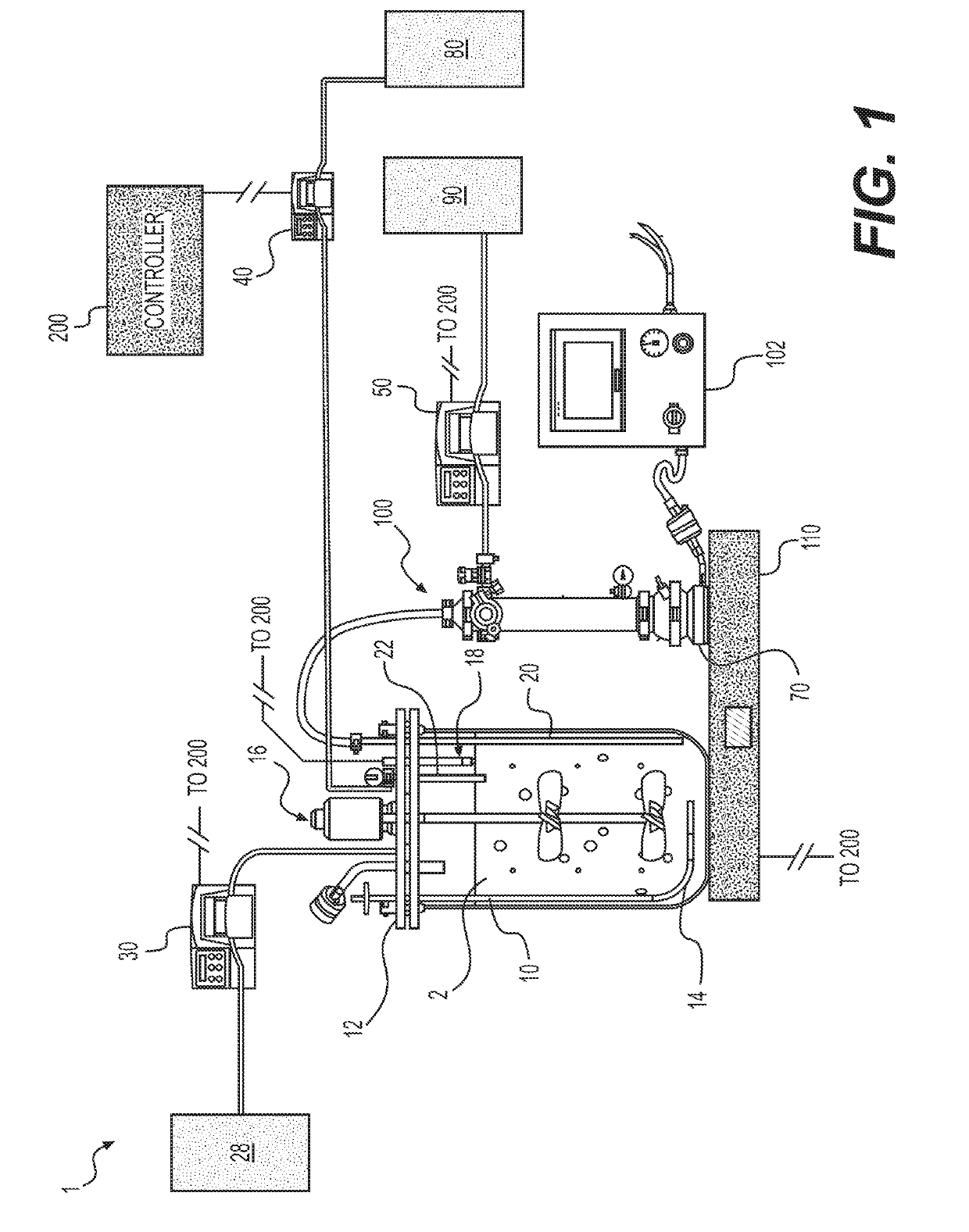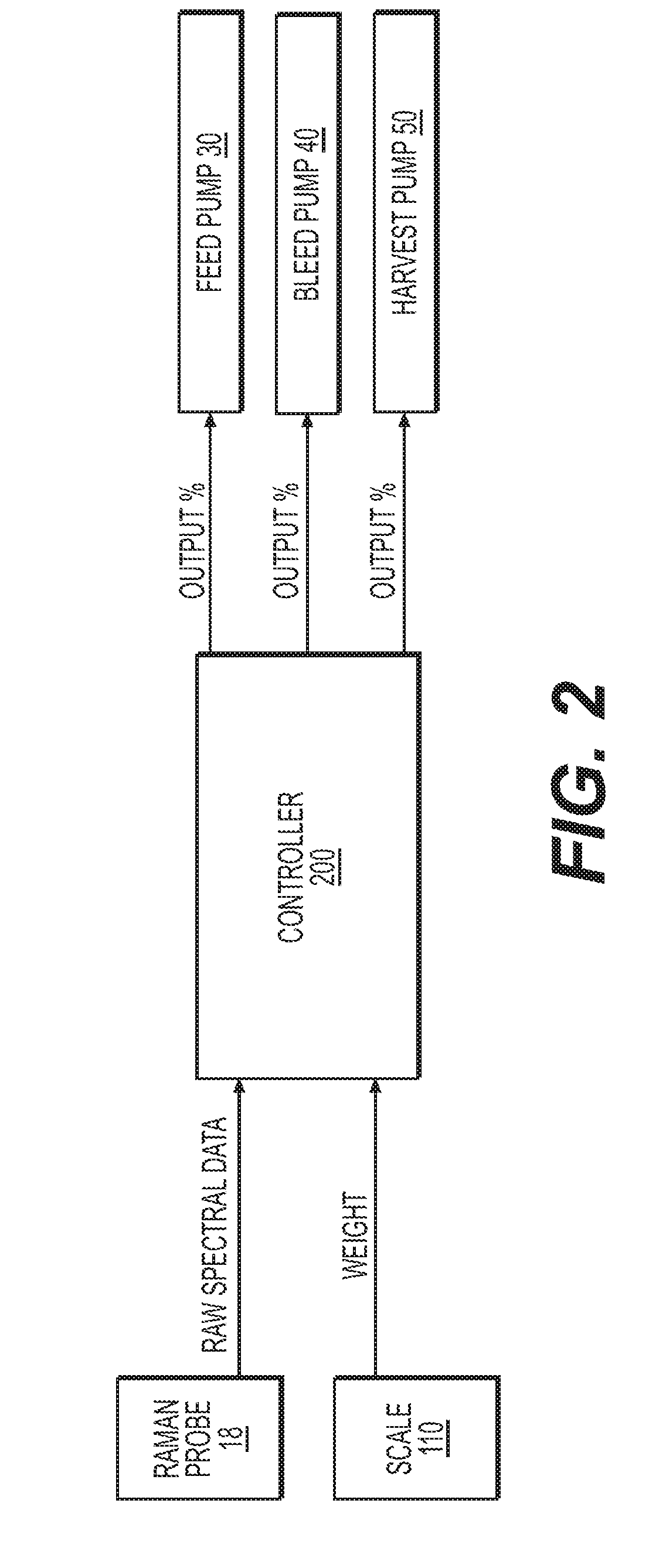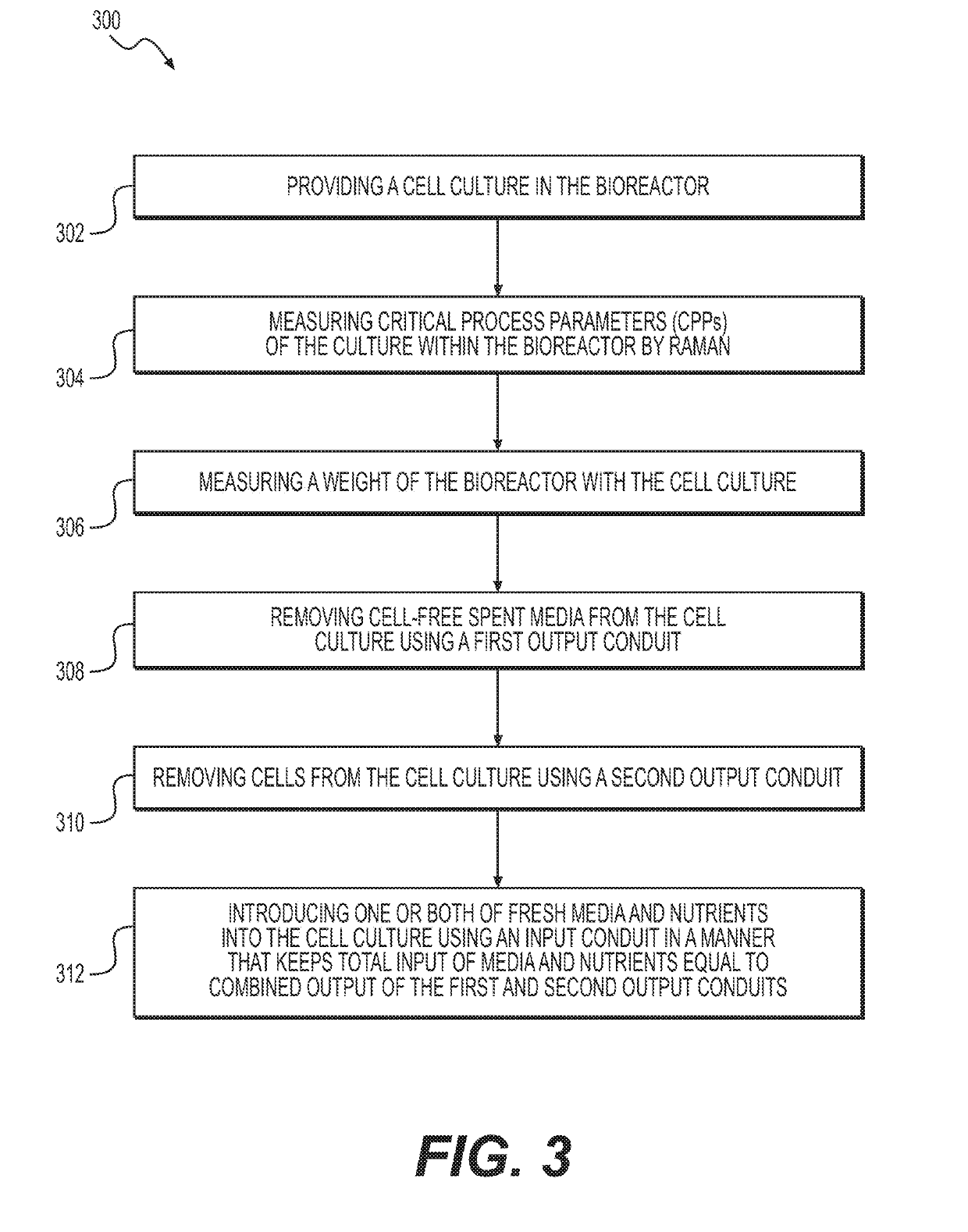Perfusion bioreactor and related methods of use
a bioreactor and perfusion technology, applied in specific use bioreactors/fermenters, bioreactors/based on enzyme production/based bioreactors, biomass after-treatment, etc., can solve the problems of overfilling or emptying of bioreactors, data gaps, and high cost, so as to reduce deviation and reduce deviation
- Summary
- Abstract
- Description
- Claims
- Application Information
AI Technical Summary
Benefits of technology
Problems solved by technology
Method used
Image
Examples
example 1 (figs.4 and 5)
Example 1 (FIGS. 4 and 5)
[0097]The experiments described in Example 1 compare a perfusion bioreactor with a fed-batch bioreactor, and show higher attained viable cell concentrations and cell specific productivity in the perfusion bioreactor versus the fed-batch bioreactor.
[0098]In one experiment, a 15 L capacity bioreactor was cultured using cell lines and medium. The bioreactor set points included temperature (35.5 degrees Celsius), agitation (250 RPM), pH (controlled using CO2 and sodium bicarbonate) (from 6.85 to 7.15), and working volume (11 L). An ATF4 Cell Retention Device, equipped with a 0.2 μm hollow fiber filter was coupled to the bioreactor. The hollow fiber filter retained cells but allowed proteins and nutrients to pass through. Two reactor volumes (or 22 L of medium) were passed through the filter every 24 hours.
[0099]Both the bioreactor and the ATF were positioned on a scale. The weight of the bioreactor, cell culture, and ATF were transmitted via Ethernet connection ...
example 2 (figs.6-8)
Example 2 (FIGS. 6-8)
[0108]The experiments described in example 2 show data for a perfusion bioreactor having no control for VCC growth or glucose. VCC was observed to peak at day 7 as the cells quickly grew to a large cell density then quickly declined through day 11 as they depleted the nutrients within the media (FIG. 6). Weight-only control was not sufficient to achieve steady-state of VCC.
[0109]Glucose also was not controlled during the perfusion run. Since the culture relied on glucose in the media during the perfusion run to feed the cells, this subsequently led to cell death during the culture. As the cells grew, glucose steadily declined although media was being consistently fed (FIG. 7). The spike in glucose detection occurring after day 10 was due to complete cell death and therefore no consumption of glucose, as can be seen when monitoring cell viability, represented in FIG. 8.
[0110]In this experiment, a 15 L benchtop bioreactor was inoculated with a given concentration ...
example 3 (figs.9-12)
Example 3 (FIGS. 9-12)
[0113]The experiment described in example 3 show data for a perfusion bioreactor with VCC control. VCC control (FIG. 9) led to a consistent steady state of viability (FIG. 10), protein production (FIG. 11), and nutrients (FIG. 12).
[0114]In this experiment, a 15 L benchtop bioreactor was inoculated with a given concentration of CHO Cells producing mAb2. The cells were cultured at a specific dissolved oxygen, temperature, agitation, and pH that were held constant for the duration of the run. The cells also were provided fresh medium and nutrients in the form of the perfusion feed at a rate of two times the reactor volume per day. The reactor volume was held constant by adding the same amount of feed to the reactor that was being removed in the perfusate using the ATF4 system. This was achieved by monitoring the weight of the system and using a computer control system to maintain a weight within plus or minus 0.05 kg of a given target. RAMAN control was not used f...
PUM
 Login to View More
Login to View More Abstract
Description
Claims
Application Information
 Login to View More
Login to View More - R&D
- Intellectual Property
- Life Sciences
- Materials
- Tech Scout
- Unparalleled Data Quality
- Higher Quality Content
- 60% Fewer Hallucinations
Browse by: Latest US Patents, China's latest patents, Technical Efficacy Thesaurus, Application Domain, Technology Topic, Popular Technical Reports.
© 2025 PatSnap. All rights reserved.Legal|Privacy policy|Modern Slavery Act Transparency Statement|Sitemap|About US| Contact US: help@patsnap.com



